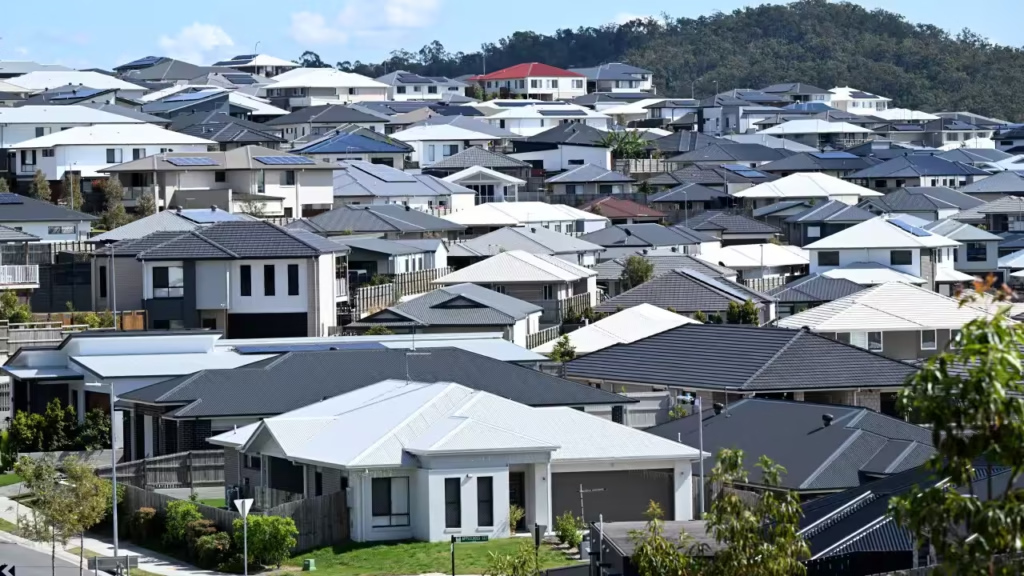I want to delve into a topic that doesn’t always get the attention it deserves when evaluating property investments: vacancy rates.
While most people tend to focus on property prices, rental yields, or capital growth, vacancy rates are a critical—yet often overlooked—metric that can determine the true success of your investment.
Understanding vacancy rates and the factors influencing them could reshape your approach to property investing and help you secure properties with the best potential for long-term returns.
What Are Vacancy Rates and Why Should You Care?
Simply put, the vacancy rate is the percentage of all available rental properties in a market that are vacant or unoccupied. It’s a key indicator of the demand for rental properties in any given area. A high vacancy rate means there are more vacant properties and less demand for rentals, while a low vacancy rate suggests strong demand and potential rental competition among tenants.
But why does this matter?
A Low Vacancy Rate = Less Risk
- If the vacancy rate in an area is low, it means rental properties are being occupied quickly. For landlords, this means less downtime between tenants and fewer periods of lost rental income.
A High Vacancy Rate = Potential Trouble
- High vacancy rates often indicate a weak rental market. As a landlord, this could lead to longer periods where your property is vacant, forcing you to lower rent or offer incentives to attract tenants.
The Mind-Blowing Impact on Your Rental Income
Let’s take a moment to consider how vacancy rates can affect your bottom line.
For example, imagine a property that you’re planning to rent for $500 per week. Over the course of a year, this would bring in $26,000 in rental income. Now, if the area has a 5% vacancy rate, this means the average property could be vacant for roughly 2.6 weeks each year. That might seem small, but it represents over $1,300 in lost rent annually! And that doesn’t even account for the additional costs of advertising, re-letting fees, or repairs during vacancies.
This is why choosing an area with a low vacancy rate is crucial to maximising rental income. Even small percentage changes in vacancy rates can lead to significant differences in overall return on investment.
Vacancy Rates as a Predictor of Future Growth
Vacancy rates are not just a snapshot of today’s rental market—they can also be a powerful predictor of future capital growth. When vacancy rates start to trend lower in an area, it often signals that the market is becoming tighter, with growing demand for rentals. This can lead to upward pressure on rents and even property prices, which is fantastic news for investors.
But here’s something that most people overlook: A market with consistently low vacancy rates often indicates broader economic strength. Think about it—if tenants are flocking to an area, it’s usually because they’re attracted by something: employment opportunities, infrastructure improvements, lifestyle, or local amenities. These factors create a virtuous cycle, leading to long-term rental demand and capital growth.
Mind-Blowing Vacancy Rates Across Australia
Now, let’s blow your mind with some current data.
Right now, some areas in Australia are seeing historically low vacancy rates— below 1%!
- Sydney’s Inner West: Vacancy rates in some suburbs have dipped as low as 0.8%. This means almost no available rentals are sitting empty. A landlord’s dream!
- Brisbane: Currently boasting vacancy rates as low as 0.6% in prime locations. Competition for rentals is fierce.
- Regional Australia: Believe it or not, many regional areas are experiencing an influx of renters, and vacancy rates have plummeted in places like Geelong, Toowoomba, and Ballarat, with some areas reporting vacancy rates under 1%.
But here’s the real kicker: Do you know what happens in areas with such tight rental markets? Renters are forced to outbid each other, driving up rents significantly. In extreme cases, some renters are offering to pay more than the asking price or paying months in advance just to secure a property.
Vacancy Rates and Property Type
Different types of properties can be affected by vacancy rates in different ways. For example:
- Apartments in city centres: Areas with a high supply of newly developed apartments can experience higher vacancy rates. In some cities, vacancy rates for apartments can be significantly higher than for houses due to oversupply.
- Family homes in established suburbs: These often have much lower vacancy rates due to strong, consistent demand from families looking for longer-term rental arrangements.
Choosing the right type of property based on these trends can make or break your investment. When vacancy rates for a specific property type drop, it usually indicates a rise in demand, leading to faster occupancy and more consistent rental returns.
What Drives Vacancy Rates?
Now, here’s where things get really interesting. Vacancy rates aren’t random. They’re driven by a range of factors:
- Economic conditions: Areas with strong job markets typically have lower vacancy rates because people move there for employment opportunities.
- Infrastructure development: New transport links, schools, shopping centres, and other amenities can draw people to an area, reducing vacancy rates.
- Population growth: Fast-growing regions often have lower vacancy rates because the demand for rental properties is outpacing supply.
- Seasonal trends: In holiday hotspots, vacancy rates can spike during the off-season but drop dramatically during peak tourist times. This is why timing your purchase to align with seasonal demand can make a big difference to your rental performance.
- Government policies and incentives: First-home buyer schemes or tax incentives for investors can influence vacancy rates by affecting the overall demand for rental properties.
Use Vacancy Rates to Your Advantage
So, how can you leverage this knowledge when investing?
- Look for tightening vacancy rates: As vacancy rates drop, rental demand rises, and this can mean higher rent returns and less time waiting for tenants.
- Avoid high-vacancy suburbs: Areas with rising vacancy rates may indicate oversupply, making it harder to rent out your property or forcing you to lower your asking rent.
- Balance risk and reward: If you can find an area with historically low vacancy rates and a growing population, you’ve likely found a stable rental market that offers strong long-term returns.
What Next?
If you’re looking to analyse vacancy rates in more detail for specific areas or property types, I’m here to help. It’s easy to focus on purchase price or rental yield, but understanding vacancy rates could be the key to unlocking a more stable and profitable property investment.
Feel free to reply to this email if you’d like to dive deeper into this topic or explore how vacancy rates can impact your next property purchase. Together, we can analyse market trends and pinpoint areas that show the best potential for returns.




